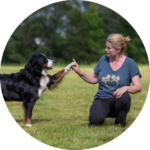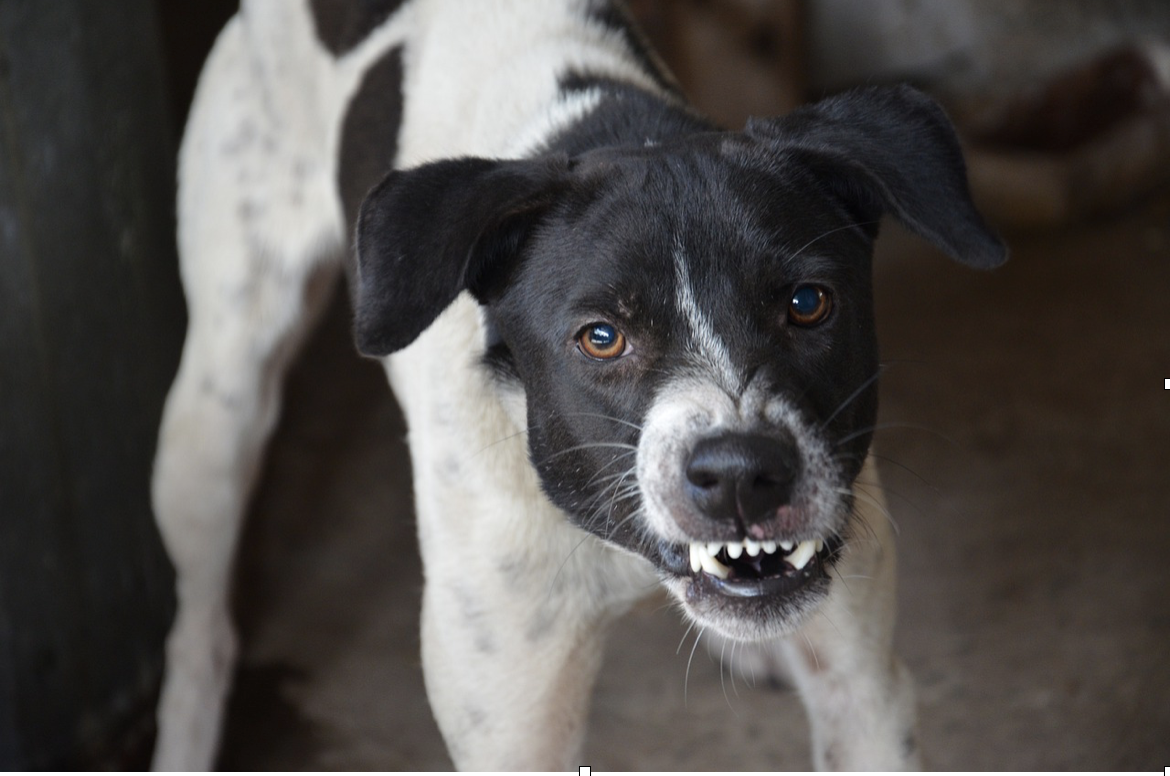by Andrea Marx CPDT-KA, CBCC-KA, CDBC, FDM
Dogs communicate with us and other dogs all the time. Unfortunately, if you aren’t trained to see behaviors that precede barking, lunging and biting, it can look to you like your dog just randomly acts aggressive. It’s always a good idea to consult your veterinarian when your dog is acting different or more agitated. Most aggressive outbursts don’t come out of nowhere. Lots of body language is used in dogs to tell us about how they are feeling about certain things.
Dog body language
Lip licking, freezing, turning away, yawning, walking away or flattening of ears can be signs your dog is unhappy. These behaviors tend to come in clusters when your dog feels stressed. Not every yawn is a sign of stress and sometimes lip licking is just the anticipation of a treat. It takes a bit of time to understand what your dog is saying. Once you have seen the brilliant way of communicating you will never unsee it.
Your dog that bites you when you try to clip his nails gave you lots of warning signs before lashing out, since you didn’t listen to the warning he escalated to biting.
A dog that is uncomfortable with other dogs inside his bubble will often turn away and freeze before snarling or snapping at the other dog. Just imagine going grocery shopping and random people come up to hug you without asking for permission. How many people will you endure before you have enough and yell or push someone away to avoid being hugged by another stranger? This is how your dog might feel when he is in situations, he doesn’t want to be in.
You can help your dog by learning as much as you can about his body language, so he doesn’t need to escalate. And you can get him out of uncomfortable situations before he feels like biting is the best way out a situation.
Management
If your dog in certain situations behaves aggressively, try to avoid those situations. The more your dog practices aggression the more he will use this strategy to cope with things that make him uncomfortable.
If your dog doesn’t like visitors in your home, give him a nice chewy and put him away. This will take the stress out for everyone. Call a dog trainer that uses positive reinforcement and knows how to change behaviors to help you with this problem.
If your dog sometimes fights at the dog park, avoid taking him to the dog park. He is trying to tell you that he doesn’t like having strange dogs run up to him and pounce on his head.
If your dog lunges at dogs on walks, avoid taking him around the neighborhood where he encounters at least 5 dogs on every walk. He is not having a good time on your walk, find remote places to take him to instead.
If your dog growls at you when you pet him, while he is eating, stop doing that. He might not bite you yet, but you are not helping with the situation, and he might escalate at some point. And no putting your hand in a food bowl will not teach him to enjoy your presence while he is eating. Just imagine you’re eating, and someone walks up to you puts his hand on your food.
What to do?
Safety first!
You can already get a head start by teaching your pup to wear a muzzle using a positive approach.
Use baby gate or other barriers to keep everyone safe. Use a leash when you have visitors over until your dog is comfortable with the new person in the house.
Identify your dog’s triggers!
Once you know what your dog gets upset about you can start changing his emotional response to the trigger. Since this is easier said than done, a qualified professional can help you how to make your dog happier about his triggers.
Stop using punishment!
Using punishment for aggressive behaviors may feel like the right thing to do but it too often escalates your dog’s ugly feelings about the thing/person or dog. There are many strategies that are helpful in curbing aggression, so reach out if you need help.
Do fun stuff with your dog!
It is exhausting and can be embarrassing to have a dog that growls, barks and lunges. Remember that you love this dog and do fun stuff with him to help both of you through this hard time. Your dog is not trying to give you a hard time, he is having a hard time and doesn’t know any other ways to cope with this situation.
Enrichment is a big part of making your dog feel good. A happy and satisfied dog is way less likely to lash out. A dog that has no hobbies, doesn’t get to explore the world, or play with his human is more likely to show aggression.
About the Author

Andrea is a Certified Dog Behavior Consultant (CDBC) with IAABC, a Certified Behavior Consultant Canine Knowledge Assessed (CBCC-KA) with CCPDT, a Certified Professional Dog Trainer Knowledge Assessed (CPDT-KA) with CCPDT, a Certified Trick Dog Instructor (CTDI), a Certified Stunt Dog Judge, and a Fear Free Certified Trainer. She offers behavior modification for aggression, reactivity, anxiety, fear and phobias as well as basic manner training. Canine Good Citizen and advanced training. Virtual sessions are available if you don’t live in her service area. She also offers classes to earn CGC, CGCA and CGCU titles.


